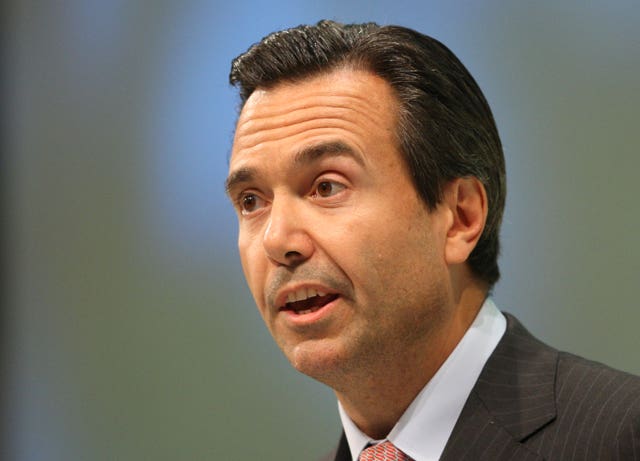
Lloyds Banking Group has thanked a cost-cutting drive for helping deliver a 23% rise in half-year profits, despite taking a restructuring charge and a £550 million hit from the payment protection insurance (PPI) scandal.
The high street lender said underlying profit rose 7% to £4.2 billion over the six months to June 30, while statutory pre-tax profits surged 23% to £3.1 billion.
But the banking giant said it set aside £550 million to cover PPI mis-selling claims in the first half of the year, bringing its total bill for the scandal to £19.2 billion.
It also was hit by £377 million in restructuring costs to cover the likes of redundancy payments to workers as it pushes ahead with a three-year strategy that will see it focus on digital banking.
The bank has been undergoing an overhaul of its workforce and branch network, having most recently announced plans to cut 450 jobs mainly affecting back office staff, while creating 255 new roles.
Speaking after the results were announced, executives did not elaborate on potential staff cuts over the second half of the year, though the bank has not set a headcount target as part of its strategic plan.
Lloyds is currently aiming to cut its operating costs to less than £8 billion in 2020.
Chief executive Antonio Horta-Osorio said: “We have delivered another strong and sustainable financial performance with increased statutory profits, higher returns, and a strong capital build.
“In February, we announced an ambitious strategy to transform the group for continued success in a digital world.
“We have made a strong start in implementing the strategic initiatives which will digitise the group, enhance customer propositions, maximise our capabilities as an integrated financial services provider and transform the way we work.”
Lloyds may have shelled out half the PPI provisions it did a year earlier – when it set aside more than £1 billion – but it could still take a further hit ahead of the August 2019 cut-off for claims.
Hargreaves Lansdown senior analyst Laith Khalaf said it “may flush out some more consumer activity, because there’s nothing that stimulates action quite like a deadline”.
“In the short term, that may mean Lloyds has to dip into its pockets again, but in the long run that’s going to free up a lot of cash for shareholders.”
Overall, he said the bank’s underlying profit growth “shows the bank is in rude health”.
Lloyds shares were up as much as 2.2% in morning trading.

The bank said its net interest margin (NIM) – a key measure of profitability for retail banks – improved on the back of lower deposit and wholesale funding costs, as well as growth in consumer finance and its acquisition of credit card business MBNA last year.
Its NIM is expected to be at similar levels for the full year, regardless of a potential interest rate hike by the Bank of England on Thursday.
Mr Horta-Osorio said the lender’s current strategic plan already factors in a 25 basis point interest rate rise each year between 2018 and 2020, while finance chief George Culmer said: “I don’t see it as a big swing factor for the next few months.”
Executives also played down the risks associated with a no-deal Brexit, with the chief executive saying wider global growth has boosted the UK economy, and that the UK’s net trade position has been aided by the weakened pound.
“That is compensating some uncertainty … which exists for our corporate customers about investment decisions given the uncertainty about the deal with Europe or not.
“As I said, I am strongly convinced that there is a very high probability of a deal being achieved by November between the European Union and the UK, given that it is in the strong interest of both parties to do a deal. That will come together with a transition period to the end of 2020.”


Comments: Our rules
We want our comments to be a lively and valuable part of our community - a place where readers can debate and engage with the most important local issues. The ability to comment on our stories is a privilege, not a right, however, and that privilege may be withdrawn if it is abused or misused.
Please report any comments that break our rules.
Read the rules here